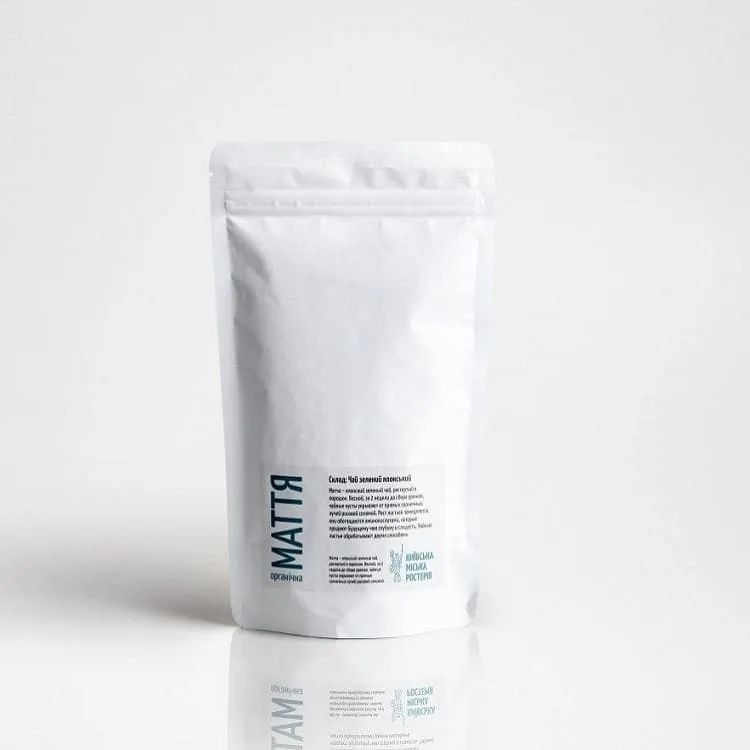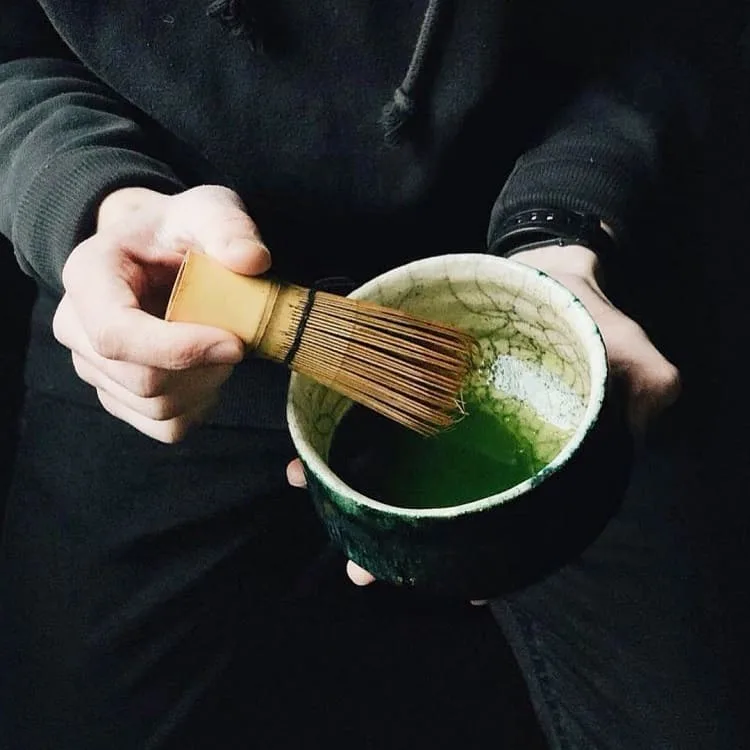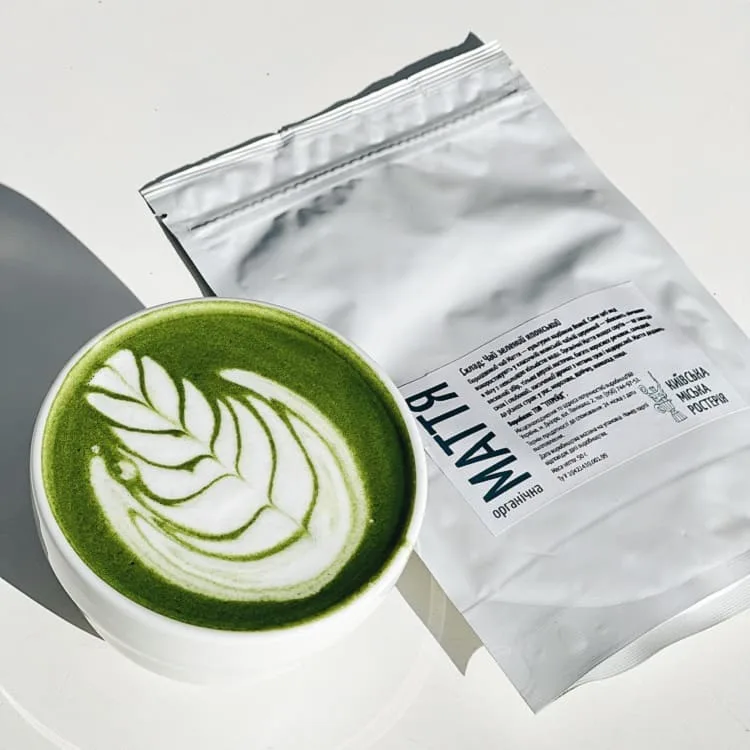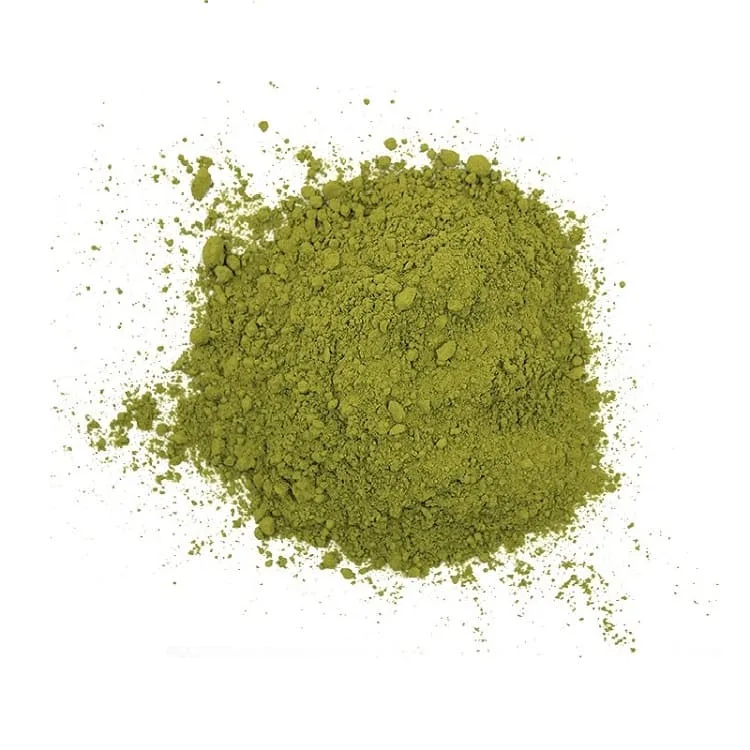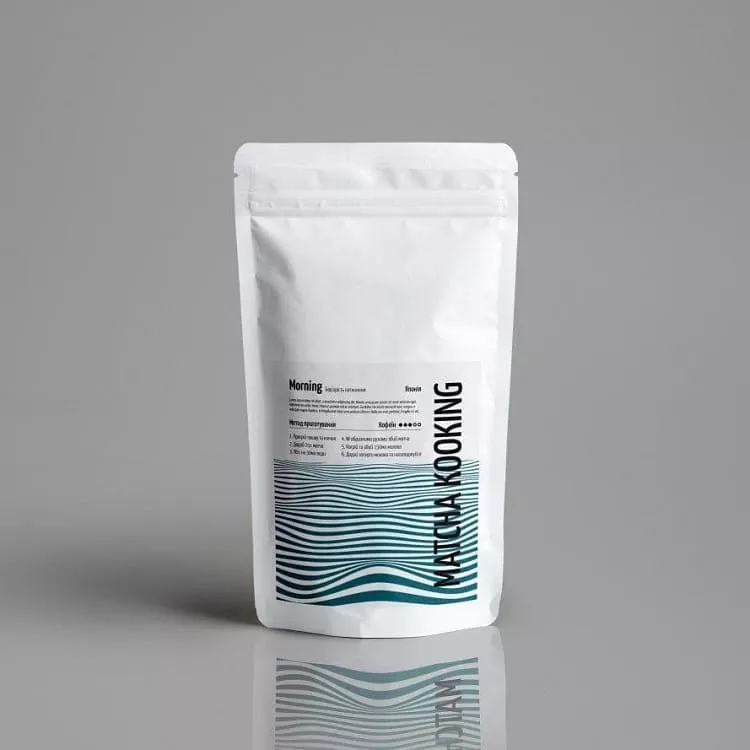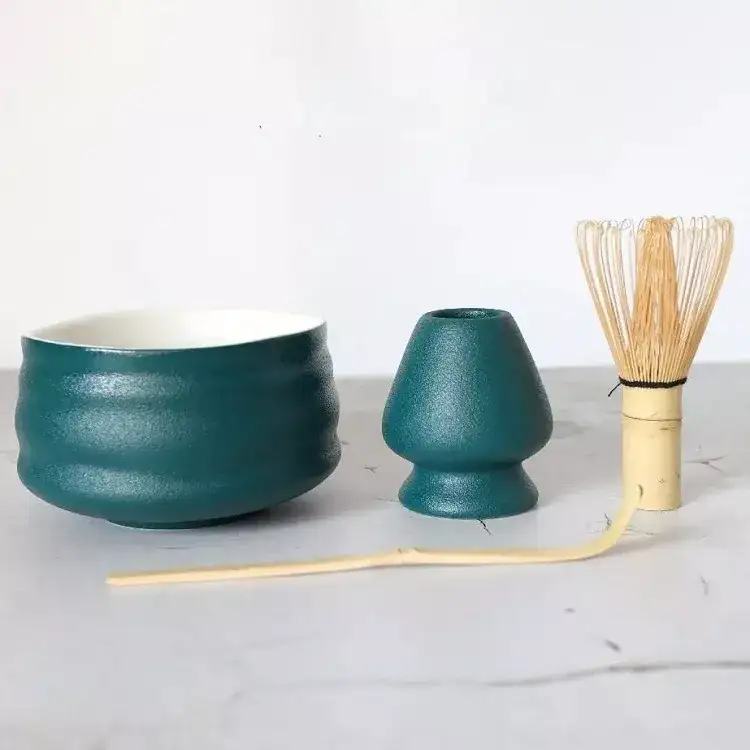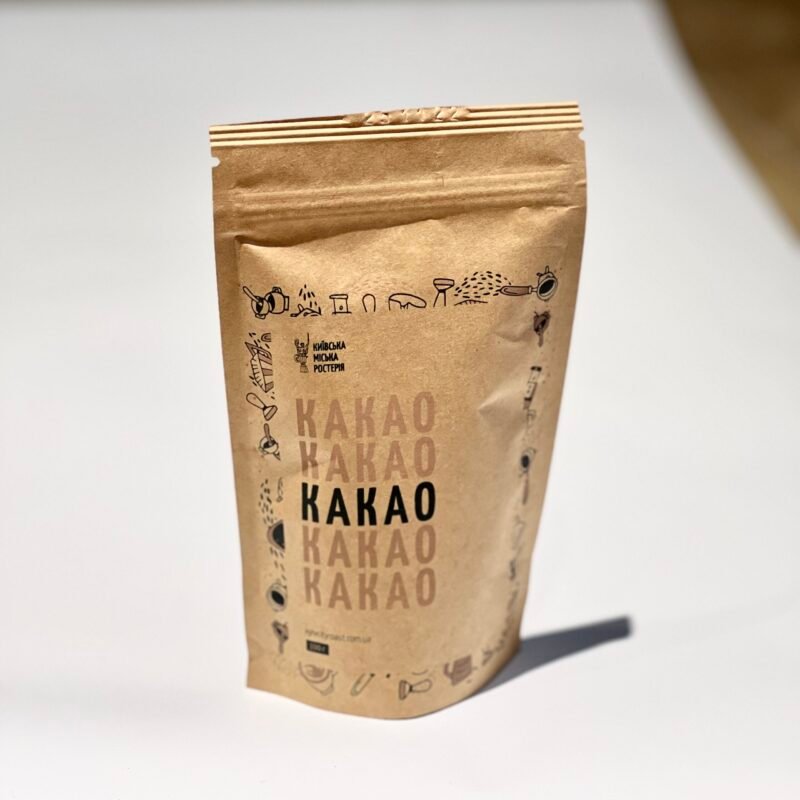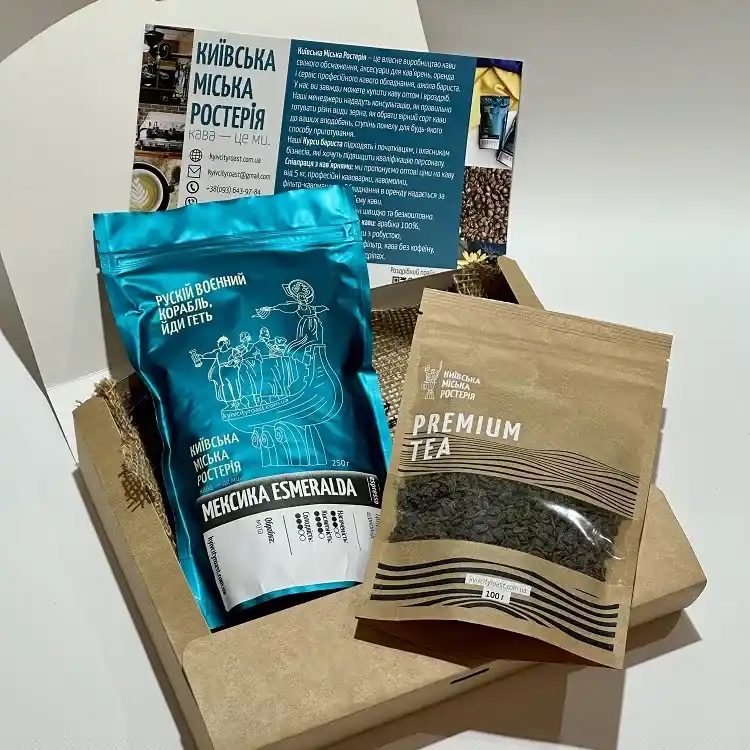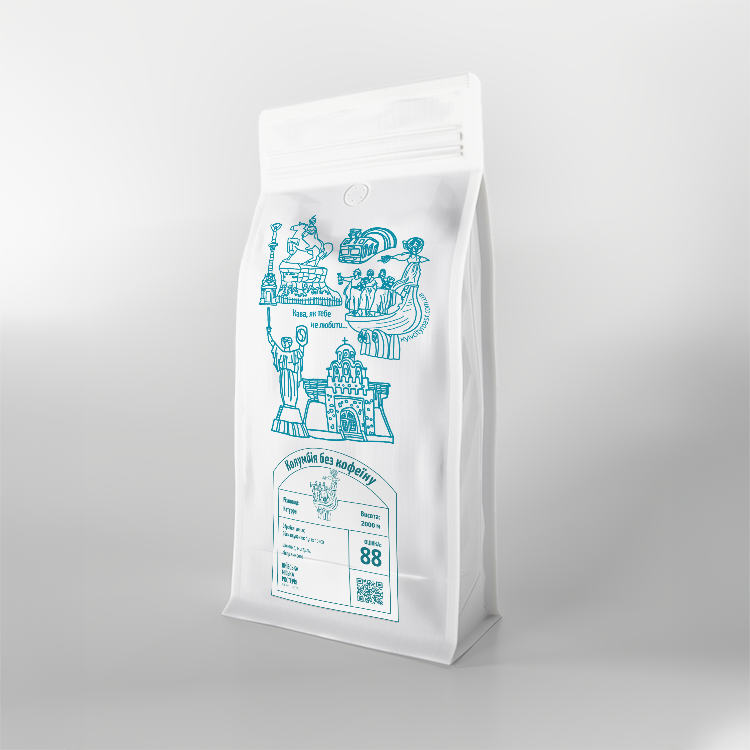Matcha Tea (Matcha) Organic 50 g
Organic Matcha of the highest grades from Japan is always spring harvest, only the upper leaves, many nutrients, sweet and deep taste, rich aroma with notes of herbs and algae.
50 grams of matcha powder is 25 servings
Country of origin: Japan.
Plantation height: 300 m.
Effect: strong, toning.
Main descriptors: fresh grass, algae.
Out of stock
Matcha Tea (Matcha) Organic 50 g
In dry form: bright green powder of the smallest fraction.
The aroma of the finished tea is bright, grassy with a characteristic note of fresh hay. The taste is juicy, dense, umami (stringy), with a slight grassy bitterness, which turns into a sweet aftertaste.
Description: Matcha is a high-quality Japanese green tea powder made from young tea leaves that are specially grown in the shade before being picked. The leaves are ground on stone millstones to preserve all the beneficial properties and aroma of the tea. Since only the best young leaves are used to produce matcha, this tea has a pronounced taste, hints of herbal freshness and a sweet aftertaste.
Advantages:
- Organic Production: Matcha tea is made from organically grown tea plantations in Japan, which guarantees the absence of chemical pesticides and herbicides.
- Young leaves: The leaves used to make matcha are hand-picked when they are at their freshest and contain the most nutrients.
- Grinding on stone millstones: To obtain powder, tea leaves are ground on traditional stone millstones, which allows you to preserve all the beneficial properties and provides a natural taste.
- Bright green color: Quality matcha has a light green color, which is an indicator of high quality.
How to choose a quality matcha:
- Color: Good matcha should be a bright green color, free of impurities or dark spots. The color indicates the freshness and quality of the tea.
- Taste: Excellent matcha has a mild but pronounced taste with notes of herbal freshness, light sweet tones, and moderate bitterness.
- Aroma: The aroma of good matcha tea will be herbal, fresh, and slightly sweet.
Cooking method:
- Brewing in the traditional way (in a bowl):
- Put 1-2 g of matcha in a bowl (chavan).
- Add about 70-80 ml of water at a temperature of 80°C.
- Using a special bamboo whisk (chatsen), whisk thoroughly until foam forms.
- Matcha Latte: To make a latte, add matcha powder to warm milk and whisk until frothy. For a more intense flavor, you can add a little honey or other sweetener.
Useful properties of matcha:
- Antioxidants: Matcha is rich in antioxidants, which help fight free radicals and prevent cellular aging.
- Vitamins and minerals: Matcha contains a large amount of vitamins (A, C, K) and minerals (iron, calcium, magnesium).
- Energy and Concentration: Thanks to its natural caffeine and L-theanine content, matcha helps increase energy, focus, and concentration without causing sudden fluctuations in energy levels.
Packaging:
- Volume: 50 g.
- Type: Powder (powder).
- Country of origin: Japan (produced on plantations certified according to organic production standards).
Ideal for:
- Lovers of a healthy lifestyle.
- Those who are looking for natural products with a high content of nutrients.
- The perfect choice for making traditional Japanese matcha tea or matcha latte.
Matcha tea is a unique type of green tea that has a rich history and is widely used in Japanese and Chinese cultures. This ceremonial drink is popular all over the world due to its unusual properties. You can buy matcha tea with delivery in Kyiv and Ukraine at Kyiv City Roastery.
Matcha originates from China, where it was used in Buddhist monasteries for meditation and spiritual purification. In the 12th century, tea was brought to Japan, where it was further developed and became an integral part of Japanese culture. The traditional Japanese tea ceremony, or “cha-no-yu”, is one of the most famous ways to enjoy this drink.
Today, matcha comes in a variety of forms, including Japanese ceremonial, Chinese culinary, and colored varieties. Japanese ceremonial matcha is considered the highest grade and is used in traditional tea ceremonies. Chinese culinary matcha is of lower quality but is widely used in a variety of dishes and beverages. Colored matcha, such as pink, blue, and red, are becoming increasingly popular due to their vibrant appearance and unique properties.
Matcha is rich in amino acids, vitamins, and powerful antioxidants. Drinking this tea can benefit your health, help cleanse your body, reduce stress, and increase your focus. When choosing matcha, pay attention to its origin, quality, and processing method.
To prepare matcha, you will need special tools, such as a whisk, a bamboo whisk , and a measuring spoon. The tea is brewed with hot, but not boiling, water, and then thoroughly whisked until a uniform foam appears. Matcha can be consumed pure or used in recipes for preparing a variety of dishes and drinks.
Regular consumption of matcha, following brewing and storage recommendations will help you fully experience all the benefits of this unique green tea.
History and features of matcha tea
Matcha tea has deep roots in Japanese culture, tracing its origins back to the 8th century. More specifically, its appearance is associated with the spread of Buddhism in Japan, when Japanese monks who studied in China brought with them special varieties of green tea.
Initially, matcha tea was used exclusively in Buddhist temples as part of elaborate meditation and spiritual practices. However, it later spread to other segments of the population and even to the imperial court. Matcha tea became an integral part of the Japanese tea ceremony (cha-no-yu), which combines aesthetic, spiritual and social aspects.
Unlike regular green tea, matcha tea is grown and processed using a special technology. Special tea bushes are covered with tarpaulin or felt in the last weeks before the leaves are harvested to protect them from direct sunlight. This leads to a significant increase in the chlorophyll content in the leaves, giving them a bright green hue. The harvested leaves are carefully ground in stone millstones, obtaining a fine matcha powder.
Unlike Chinese green tea, Japanese matcha tea has a richer, herbal flavor with hints of sweetness, nuttiness, and/or maltiness. It is prepared by whisking the powder with hot water in special cups, which gives it a unique foamy texture.
Which matcha tea to buy
Among the different types of matcha tea, there are several main ones:
Ceremonial matcha tea
Ceremonial matcha tea is the highest grade used for the traditional Japanese tea ceremony. It is characterized by a delicate, mild taste with a slight sweetness and a uniform, rich green color of the powder. The tea particles are extremely small, which allows them to dissolve completely in water, creating a smooth, silky texture of the drink. Ceremonial matcha is grown from the best early spring leaves of the tea bush, which are carefully picked by hand. This type of matcha is the most valuable and expensive.
Premium matcha tea
Premium matcha tea can be purchased from us, it is also of high quality, but inferior to the ceremonial variety. It is made from more mature leaves, collected later in the spring. The taste of premium matcha can be slightly richer and with a slight bitterness. The particle size of the powder can also be slightly larger than that of ceremonial. Despite this, premium matcha is still considered a high-quality product and is widely used both in traditional Japanese drinks and for the implementation of modern culinary ideas.
Culinary matcha tea
Culinary matcha is the lowest grade, intended primarily for use in cooking and confectionery. It is made from later, more mature leaves of the tea bush and usually has a richer, sometimes even slightly bitter taste. The particle size of culinary matcha can vary from very fine to a coarse powder. This type of matcha is not recommended for direct consumption as a drink, but is great for adding to a variety of dishes, pastries, cocktails, etc., giving them a bright green color and characteristic taste.
Colored varieties of matcha tea
In addition to the traditional green color, there are also other, less common color variants of matcha tea. For example, pink matcha is obtained by adding pigments extracted from sakura flowers. Blue matcha is made from leaves enriched with anthocyanins. And red matcha is made from leaves treated with enzymes that give them a unique reddish hue. These color varieties of matcha have their own special taste characteristics and additional beneficial properties associated with the content of certain biologically active substances.
Useful properties of matcha tea
Matcha tea is a unique and extremely healthy drink, distinguished by its composition and properties. One of the most important aspects is the high content of antioxidants, in particular catechins, which help the body fight free radicals and protect cells from harmful effects. Matcha contains 3-5 times more catechins than regular green tea. These powerful antioxidants have anti-inflammatory effects and have a positive effect on the cardiovascular system, reducing the risk of cardiovascular diseases.
In addition to antioxidants, matcha tea is rich in the amino acid L-theanine, which has a calming and relaxing effect on the nervous system. It improves concentration, increases productivity and reduces stress levels. Matcha also contains a small amount of caffeine, but it is absorbed slowly thanks to the combination with L-theanine, which avoids a sharp surge and subsequent decline in energy.
Matcha tea is rich in vitamins and minerals, including vitamin C, vitamin K, iron, calcium, and magnesium. All of this makes it beneficial for maintaining overall health and immunity. Regular consumption of matcha can help improve digestion, lose weight, and even prevent some types of cancer. This unique blend of beneficial properties makes matcha tea a true “superfood” and an excellent choice for those who care about their health. Buying matcha green tea is the best choice for energy and a good mood.
Tips for choosing, storing and using matcha
Choosing high-quality matcha is key to getting the most out of this unique tea. When buying matcha, look for the color of the powder – it should be bright green with no yellowish tint. It is also important that the matcha has a rich, deep aroma of freshly brewed herbal notes. Do not buy matcha that contains impurities or foreign particles.
To store matcha, it is necessary to use an airtight, dark container that protects from light, moisture and air. It is recommended to store the tea in a cool, dry place at room temperature. If these conditions are met, matcha will retain its beneficial properties for 3-6 months.
Matcha should be brewed in a special cup or ceremonial cup with a bamboo whisk. For one drink, you will need 1-2 teaspoons of matcha and 60-80 ml of hot, but not boiling, water (70-80°C). The loose powder is thoroughly shaken with a whisk until a homogeneous, creamy foam is formed. The finished drink can be diluted with milk, honey, sugar or other ingredients are added as desired.
In addition to the traditional matcha drink, this powder can be used to prepare a variety of dishes and desserts. It is added to pastries, ice cream, cocktails, syrups, sauces, etc. The proportions of matcha in recipes are usually 1-2 teaspoons per serving. Due to its unique taste and aroma, matcha is able to give originality and a special flavor profile to any dish.
Drinking matcha is recommended as part of a healthy lifestyle. Due to its high content of antioxidants, amino acids, vitamins and minerals, this tea has a positive effect on the body, increases tone, improves attention and concentration. However, as with any other caffeinated drink, you should not abuse matcha, especially before bedtime. The optimal amount is 1-2 cups per day.
Popular questions about matcha tea
Matcha tea has become extremely popular around the world over the past decade. However, despite its growing popularity, many people still have questions about this unique green tea. Let’s take a look at the most frequently asked questions and provide comprehensive answers.
How is matcha tea different from regular green tea?
Matcha tea is made from the same leaves of the tea bush as regular green tea, but with a few key differences. First, the leaves for matcha are carefully shaded for several weeks before being picked, which increases the chlorophyll and amino acids, such as L-theanine, content. Second, the leaves are ground into a powder, unlike regular green tea, where the leaves are simply dried and rolled. This unique processing gives matcha a more intense flavor, color, and texture.
What are the beneficial properties of matcha tea?
Matcha tea is extremely nutritious and rich in antioxidants. It is high in vitamin C, vitamin K, iron, calcium, and fiber. In addition, matcha is rich in catechins, powerful antioxidants that may help improve cardiovascular health, lower cholesterol, and even prevent some types of cancer. Thanks to its L-theanine content, matcha may also improve focus and reduce stress.
How to properly prepare and consume matcha tea?
Making matcha tea is quite different from brewing regular green tea. You need to use a special cup and a bamboo whisk to whisk the powder with water. The water for matcha should not be too hot, usually 70-80°C. Matcha must be whisked thoroughly to obtain a uniform, lush foam. Traditionally, matcha is consumed in small sips, enjoying its unique taste and texture. Matcha can also be added to various drinks and dishes, such as cocktails, ice cream or pastries.
Conclusion: This organic matcha tea is perfect for those who appreciate the traditions of Japanese tea culture and are looking for a high-quality product to support their health. Thanks to its high content of antioxidants and nutrients, it is not only delicious, but also beneficial for the body.
The aroma is of freshly cut grass, seaweed. The taste is herbaceous with a hint of tropical fruits.
What is the difference between expensive and cheap? The cheaper one, the more bitter. And the cheaper one, the darker the green color.
Why is matcha powder? It’s because of ancient Japanese traditions.
What do you need to make matcha? Traditionally, these are Cha Sen (whisk), Tia Wan (bowl), and Tia Saku (bamboo stick that holds exactly 1 gram of matcha powder). But you can make matcha using our regular utensils and cutlery.
Preparation: For one serving, take 2 grams of matcha, 90 ml of water at a temperature of 80 degrees (the temperature is important so as not to overbrew and make the drink bitter). Pour the matcha with water and beat with whatever is at hand (a whisk, cappuccino maker, fork, or in a thermos mug, shaker, etc.) drink immediately after preparation, if desired, add milk to taste.
Is it true that matcha invigorates, but is it not harmful to health? Theine – contained in matcha and has an invigorating effect, unlike caffeine, it does not give an instant effect, but has a gradual long-term effect on the body. Matcha is rich in antioxidants and vitamin C.
It is not recommended to drink matcha on an empty stomach.
Store matcha powder in an airtight container, away from light, in the refrigerator.
Delivery methods
- Courier delivery: carried out throughout Ukraine by couriers of the Nova Poshta service.
- Nova Poshta: delivery to Nova Poshta branches and post offices.
- ROZETKA Delivery: delivery to the pick-up point. Rozetka provides delivery services through its ROZETKA Delivery delivery service. How it works: You place an order on our website https://www.kyivcityroast.com.ua/ and choose the ROZETKA Delivery delivery method, indicate the address of the pick-up point. After that, we deliver to the ROZETKA pick-up point chosen by the customer and the Customer independently picks up their order from this pick-up point.
- Pickup from the Kyiv City Roastery office: our address is Kyiv, Holosiivska St., 13 (Google Maps). Pickup is by prior arrangement of the date and time of order pickup (Mon-Fri). Orders are picked up on weekdays Mon-Fri from 9:00 a.m. to 6:00 p.m.
